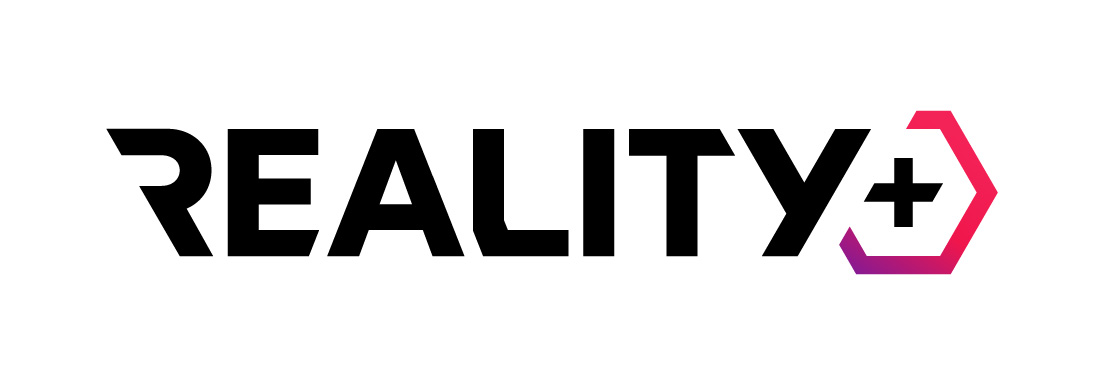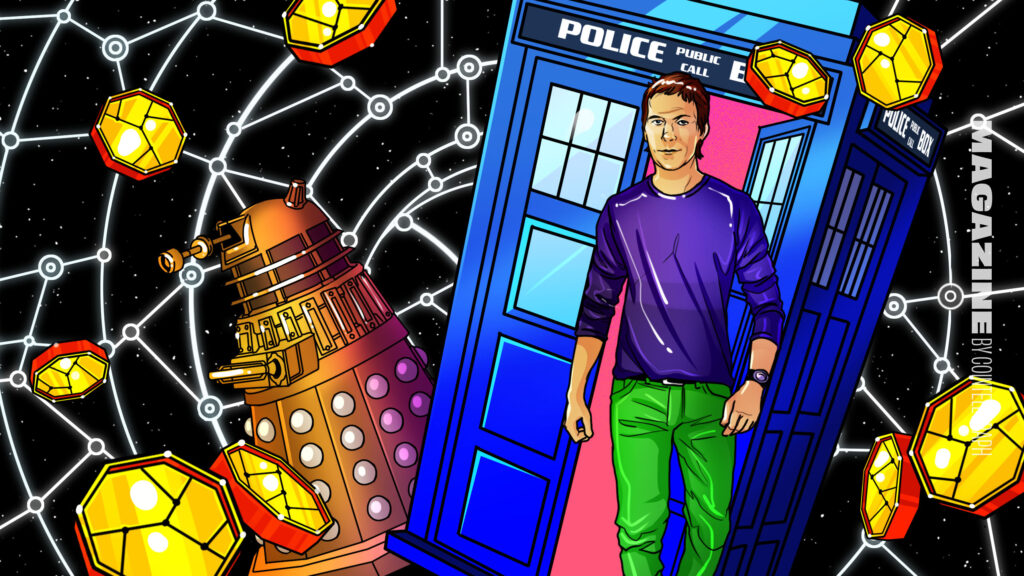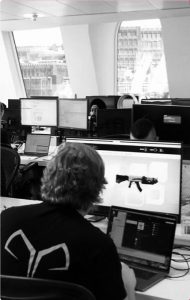Reality+ boss Tony Pearce tells of his own journey through time and space and how he got Doctor Who to materialize in Web3.
The Christmas viewing figures for BBC’s flagship program Doctor Who are in, and the show continues to prove supernaturally popular with more than 10 million views on iPlayer over the Christmas season.
For some, the timeless popularity of Doctor Who is as mysterious as the different iterations of the Doctor. It has been more than 60 years since the first episode aired, and the upcoming 2024 series will not only be broadcast on the BBC but also make its debut on Disney+ in April. The House of Mouse is tipping in substantially larger budgets meaning an ever larger audience beckons, not least North America. And it doesn’t end there.
The UK corporation is also moving with the times and has entered the blockchain games world by working with European Web3 company Reality+. It’s not the metaverse though — the BBC was very clear about that.
Reality+ worked with BBC Studios to create a Doctor Who trading card game where each card is a unique NFT. Fans collect digital versions of their favorite Doctor Who characters in the form of Doctor Who: Worlds Apart trading cards.

Doctor Who: Worlds Apart uses the Hedera blockchain

Reality+ CEO Tony Pearce explains that when he co-founded the company back in 2017, the biggest-selling blockchain games were trading card games such as Gods Unchained, where players could buy packs of digital cards, play them in the game, or trade them in NFT marketplaces.
Pearce wanted to create a new game based on the concept but wanted to find a brand that had millions of fans and thousands of great characters that could be used in the cards.
“I put my thinking cap on, and it came to me. Doctor Who was it! A global IP with more than 60 years of great content and a huge fan base. Even better, the BBC was based 30 minutes from my office and not 11 hours on a plane to Hollywood.”
Pearce came up with a game design similar to Top Trumps where users purchase a pack of digital cards and then challenge an opponent trying to win their card – a Dalek will take on a Cyberman, for example.
“I eventually got a meeting with the BBC and presented this new concept. Almost a year later, and many, many meetings with the BBC, they agreed to license to us the global rights to Doctor Who.”
A year later, their online store went live, and they started selling limited edition Doctor Who card packs and quickly sold more than 1 million cards even before the game was launched. Pearce says the platform uses the Hedera blockchain, which can handle 10,000 simultaneous transactions, meaning users “can mint their cards in seconds.”
“It was incredible; fans of Doctor Who were buying these cards as collectibles even though the game was not even released. Players were making their decks, trading cards online, all in anticipation for the game launch.”
The community grew organically because of the Doctor’s massive fanbase, so when the game launched on PC in December 2023, there were immediately thousands of players downloading and playing.
In terms of dollar value for an NFT project, Doctor Who: Worlds Apart is a relative minnow, and the market has only seen around $1 million in trades so far. But in terms of introducing blockchain collectibles to a whole new audience, it’s mission accomplished.
A new mobile version will launch in time for the new Doctor Who TV series in April 2024 on iPhone and Android, expanding its reach to even more crypto noobs.
Tony Pearce and Reality+
For Pearce, working with huge clients such as BBC Studios and being ahead of the game is nothing new; his own journey through time and space reflects a knack for being there at the start of every new wave — but more on that later.
It was on an island off the coast of Dublin called Labay Island that, in 2017, the London entrepreneur had his crypto lightbulb moment.
A co-founder of the London networking event The Centurions, Pearce had run it at Soho’s Century Club and then held quarterly events in New York, Istanbul, Berlin and Munich. But that year, Pearce took the event to Lambay Island for the first time.
“The success of The Centurions gave me confidence to take it further afield, so I invited influencers from the blockchain and Web3 worlds to join me on Lambay Island. I wasn’t familiar with the technologies, but I knew something big was coming, so it made sense to be with and listen to people who understood it,” he says.
It was the best three days of learning in my life, and I realized that this was a game-changer. Not only did it suddenly click on that digital currencies, the blockchain and Web3 were the future, but I also bought some Bitcoins at $1,000 — not the worst decision in my life.”
Pearce returned from Lambay to launch his company’s new mobile game, Reality Clash. He says the game was one of the first mobile games to integrate NFTs, just 12 months after his lightbulb moment in the Atlantic. Five years later, Reality+ is one of Europe’s largest Web3 companies.
“It was a no-brainer. Why would gamers not want to own their in-game items and have the ability to sell them or take them into another game? By tokenizing these items on the blockchain, this was now possible. These later became known as NFTs, but when we first started, the phrase NFT did not even exist,” he says.
First job selling TV ads at 19
Pearce is a serial entrepreneur and games pioneer and has been involved in gaming, tech and mobile for more than 25 years. But his story starts even further back than that.

“I’ve always been interested in technology and what was coming next. My first proper job was in advertising selling airtime in the U.K. for Television South West when I was only 19 years old.”
Pearce moved to advertising agency The Media Business in 1985, buying airtime for clients, including Polygram Records, Air Miles and Nestle, and joined British Satellite Broadcasting (BSB) in 1989 before it merged with Sky.
He even worked with weird technology, such as the squarial, an unobtrusive and much-marketed satellite receiver that never really caught on and was closed down in 1993. Early-to-market is not always a winner, as many entrepreneurs find out in their careers.
Pearce then moved to Telstar Records, which had been his biggest client at BSB, and ran their new video games division, Telstar Electronic Studios. It developed one of the first PlayStation 1 games Lone Soldier before selling the business to games publisher Take 2.
Early avatar technology
“Those were great and really exciting days. I went on to co-found Digimask, a digital technology company where users could create a 3D image of their head with two photos. They could then see themselves appear in video games playing football or driving a car. That sounds crazy now because of how things have moved on, but, at the time, nobody else was doing it. I’m still very proud of that work.”
“Those were crazy and intense days, traveling to the U.S. and talking to Hollywood studios about taking their content to a completely different platform. Reality+ wouldn’t be what it is today without that experience.”

Pearce then moved to Digital Bridges, the first European VC-funded mobile games company.
We secured the rights to Space Invaders on that platform, and I was the first person in the world to sell a downloadable mobile game to Vodafone in 2004. It was the Wild West back then; it felt as if anything was possible.”
Pearce set up mobile games publisher Player X 12 months later. The company was named by Library House in 2005 as one of the fastest-growing VC-backed companies in the U.K. before it was acquired some years later by Spanish mobile content company ZED.
Brands in the metaverse
So, fast-forwarding to the present day, Pearce waxes lyrical about Web3 and Reality+ and brands in the metaverse.
“It’s not just the BBC and Doctor Who. We work with ITV studios and recently re-launched their TV brand Thunderbirds and created Tracy Island in The Sandbox metaverse, allowing users to interact with Thunderbirds characters and go on rescue missions.”

“We also work with global brands, including FIFA and others, by developing a Web3 platform that lets brands launch and manage their Web3 strategies that include blockchain games, multichain NFT experiences and metaverse development.”
Last year’s FIFA Women’s World Cup 2023 in Australia and New Zealand was a big deal for Reality+. They launched Own The Zone, an officially licensed FIFA Web3 game in which fans predicted what would happen during live matches.
“We built a unique platform called The Spatial Platform that received real-time FIFA data sent directly to our platform during the match,” he says, adding that fans with the best predictions won digital blockchain collectibles and real-world prizes. “It was great fun to play, and the plan is to take our Spatial Platform to new sports games, such as basketball and the NFL, allowing fans to really engage in the action.”
“We’re also looking to disrupt the fashion industry after recently announcing a partnership with Paul Frank. Remember Julius The Monkey? The character has been emblazoned on clothing and accessories since the mid-1990s, to become a global phenomenon.”
The plan is for fans of the character to be able to buy physical clothing and get its digital twin to wear in the metaverse. There will also be new games built around Paul Frank collectibles.

Hold on, didn’t the metaverse die?
The hype behind the metaverse and Web3 dissipated during the bear market in 2023 as the NFT market collapsed and the backlash began in earnest. The narrative shifted to AI seemingly overnight after the public launch of ChatGPT.
Pearce, however, is confident that this is just another technology cycle where over-expectations follow the initial burst of interest before the next wave of innovation — call it Web3 2.0 if you will.
“Web3 is not going away. If brands don’t have a Web3 strategy in the next two or three years, they will lose their audience,” he says.
“We have a dedicated team of 60 people, and we know big brands trust us as their guardians, knowing that we can propel them into the Web3 era. That may sound like bravado and overconfidence, but I feel as if I’ve been here more than once before.”
That remains to be seen, but Pearce’s enthusiasm is certainly infectious. He could probably sell oil to Saudi Arabia but is currently staying true to Web3 and is in the final stages of his next funding round, which he says is “very exciting” and “another game-changer.”
“I’m also a mentor at Block Dojo, a global blockchain incubator that helps to turn small companies into the next big thing. I’m a huge believer in the power of blockchain, and I love spending my time helping new entrepreneurs take their ideas and dreams to the next level.”
“There are two incubated startups at Block Dojo I can mention. Buzz Mint is an NFTs for media and entertainment play that help brands to create NFTs of digital assets to sell and market to their customer. I also like Ninja Punk Girls, a crypto game that speaks for itself!”
Pearce currently has no plans to fly from London to Dublin and revisit Lambay Island, as he prefers to look to the future rather than look back.
But on a windy day in 2017, looking across the Atlantic, his life changed and took him into the world of Web3 with Doctor Who, one of the biggest entertainment brands in the world.
Not bad progress for a 19-year-old who started life selling TV advertising airtime.


